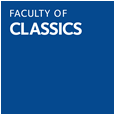This article reconstructs the complex history of modifications made to the Roman aqueduct of Arelate (Arles), by studying carbonate incrustations in its channels. These deposits, precipitated by flowing water, have preserved an archive of the aqueduct's life‐cycle in their stratigraphy, fabric and stable isotope composition. Two tributaries, from Caparon and Eygalières, converged in a basin before an arcade bridge, from which a single channel continued to Arles. Originally, the Caparon branch alone supplied Arles with water from the south side of the Alpilles hills, the basin acting as a header basin before the arcade. Later, the Eygalières branch from the north side of the Alpilles was joined to the basin. The Caparon branch was then diverted to power water‐mills at Barbegal, changing the basin's function from convergence back to a header basin. After some decades, the Eygalières branch was also used to supply the mills, changing the basin into a distribution structure. From Arles, lead pipes laid across the bed of the Rhône also supplied water to the Trinquetaille quarter. Major cleaning of the aqueduct in the early fourth century is also identified. Anthropogenic carbonates can therefore provide crucial information on the provenance of water and alterations to ancient aqueducts.
stratigraphy
,Arelate
,microstratigraphy
,geoarchaeology
,anthropogenic carbonate
,Arles
,sustainability
,history of water management
,geochemistry
,Roman aqueduct



